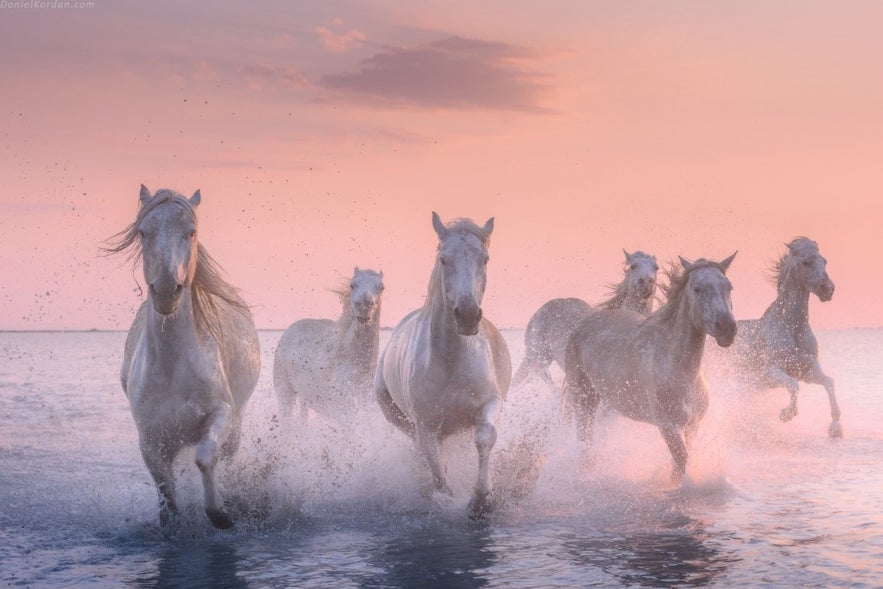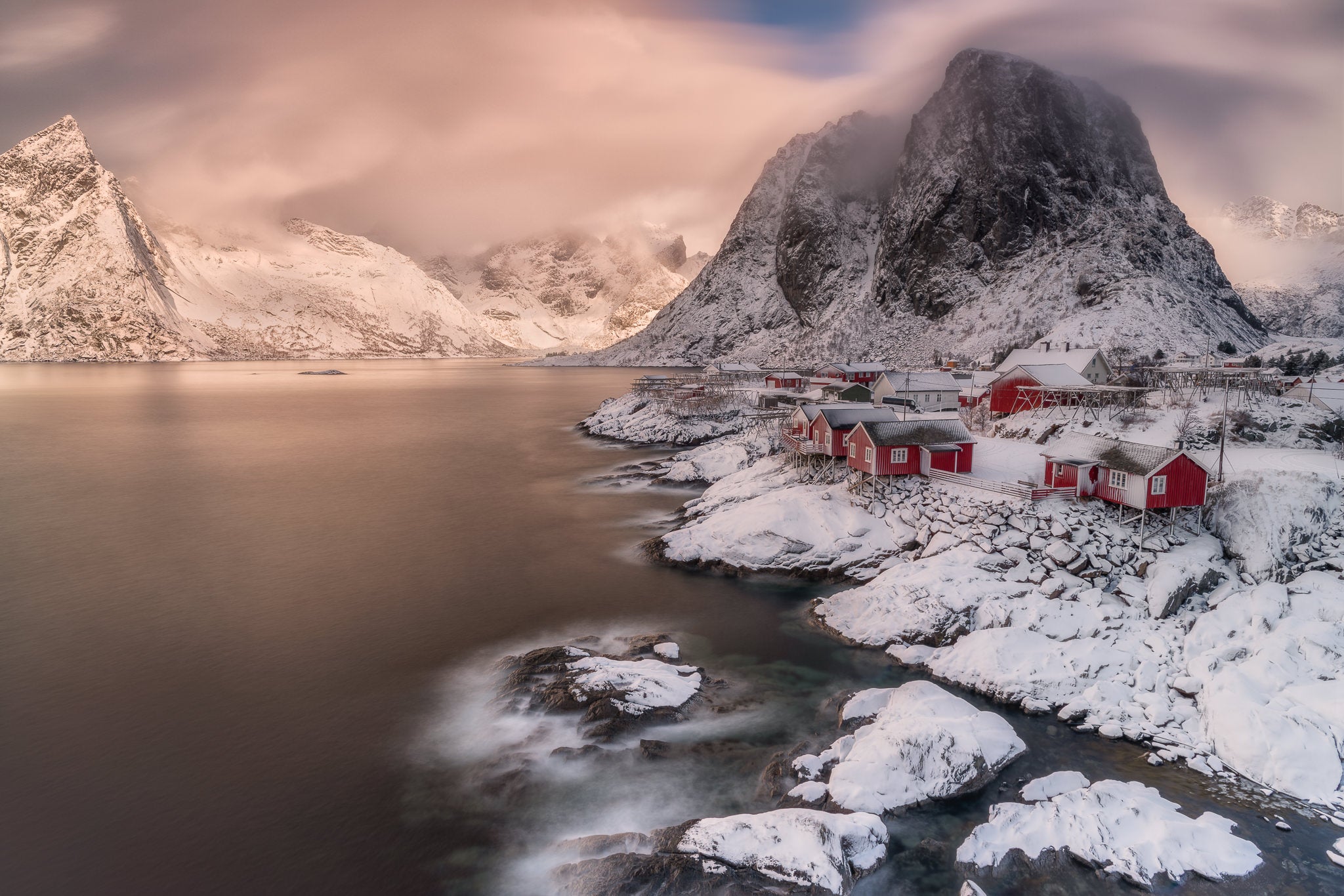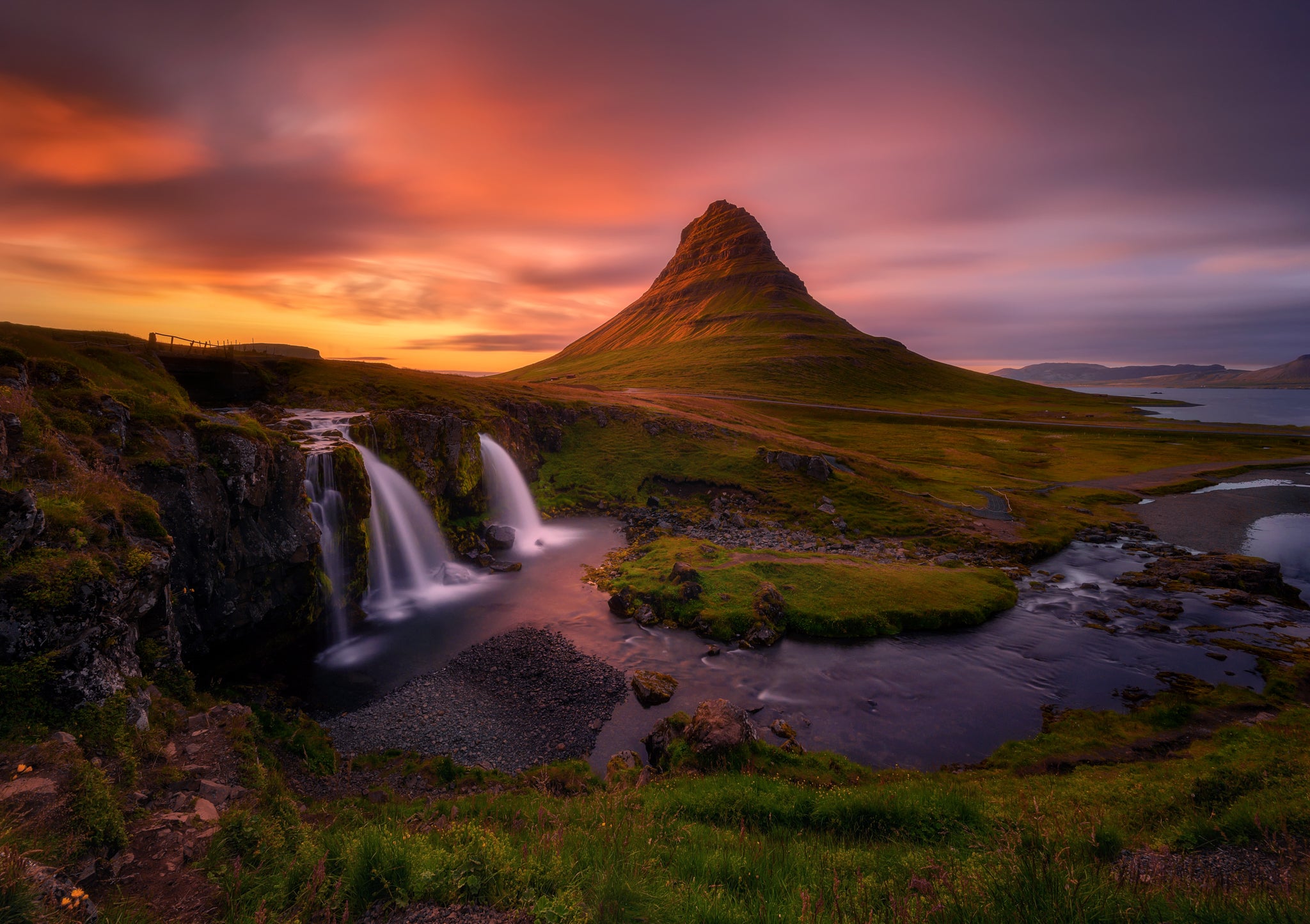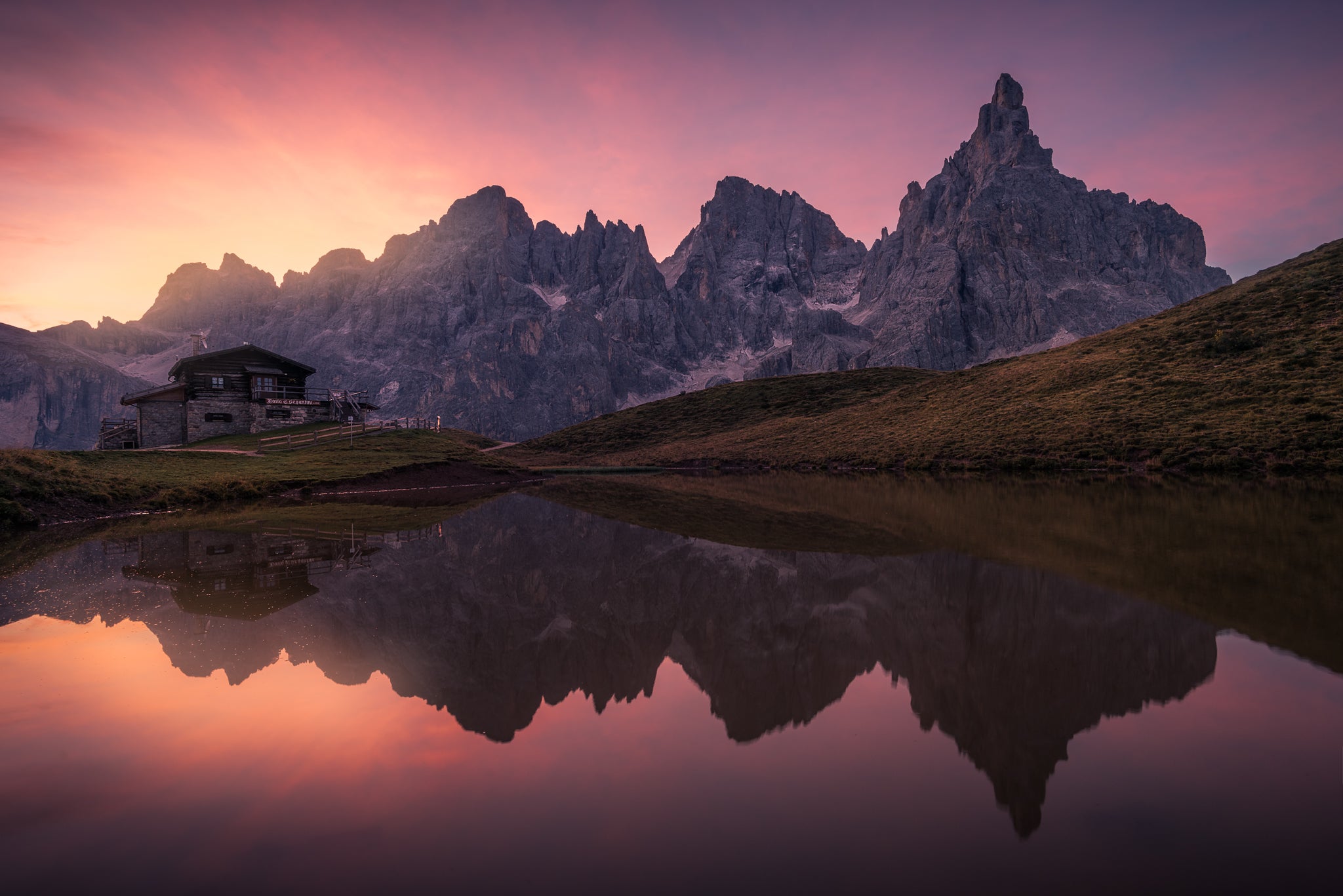
Renowned landscape photographer, Daniel Kordan, is an explorer at heart. Having realised his passion for photography and travelling at a young age, he now spends his time sharing his vision and the many wonders of the world with people all around him.
This month, we caught up with Daniel to find out how he came to be where he is today and the journey that he took to get there. Daniel also shares some insight into his workflow, camera gear and equipment with which he achieves his signature, magical style.
- Check out this 10 Day Hokkaido Photography Tour in Japan
- Explore these articles on Landscape and Nature Photography
- Discover this Antarctica Photography Expedition 2021 with Daniel Kordan
Hello Daniel. Tell us a bit about your childhood and what life was like when you were growing up.
I was born in Russia and grew up in a small town about 120km away from Moscow, surrounded by beautiful nature all around. I spent a lot of time with my friends in the outdoors, swimming in the lake and riding around on our bikes. I also attended a painting school for around 6 years, which was how I learned about composition and using colours. My teacher taught me a lot of things which I remember even to this day and use actively in my photography.
Whenever I was on summer or winter breaks away from school, I would often get up early to see the sun rise in nature. I loved the morning fog that would cover some of the lakes near where I lived in winter and autumn. Also in winter, many of the trees would be covered in hoar frost, which was a really magical experience.
 Horses in Iceland. Photo by: 'Daniel Kordan'.
Horses in Iceland. Photo by: 'Daniel Kordan'.
Where are you currently based?
These days, I spend a lot of time living out in the world. Around 9-10 months of the year are spent travelling, though I still hold my Russian citizenship and have a small flat in Moscow.
How did you develop an interest in photography?
When I was in University, I joined the mountain club and became a mountain and climbing guide about 10 years ago. This involved hiking and travelling to many incredible places to watch the sun rise in the mornings. Every place that we visited, I always had the feeling that I wanted to share them with others. In this role, I met a lot of amazing people and was lucky enough to be exposed to different cultures. Having my camera meant that I could document all of my experiences, which I absolutely loved.
 Lavender fields of Provence. Photo by: 'Daniel Kordan'.
Lavender fields of Provence. Photo by: 'Daniel Kordan'.
What was your career path? How did you get from being an aspiring photographer to actually doing it full time?
I studied Science at University, so never thought that I would end up working as a professional photographer. However, photography has always been a passion of mine so I pursued it as a hobby. Finally, I began guiding photo workshops as well, to share the beauty of nature with others. Making the decision to choose photography as a career was very difficult, though once I took the jump, I knew that there was no turning back.
For around 5-6 years, I worked hard on my two passions in life – travel and photography. It took me around 7-8 years to build up a landscape photography portfolio. Only then did people start contacting me for work, requesting to licence my pictures and making print requests. It was nice when I finally had some return customers on my photography workshops and tours!
These days, photography hardly seems like work. It’s still something I really have a passion for doing and it never gets tiring!
 Winter wonderland in the Lofoten Islands. Photo by: 'Daniel Kordan'.
Winter wonderland in the Lofoten Islands. Photo by: 'Daniel Kordan'.
What is it that interests you most about teaching photography?
I get a lot of enjoyment from teaching photography to others. It’s very rewarding to see people improving their skills during a workshop and being happy about taking amazing pictures.
I also find that I am able to learn a lot from each and every person who comes on my workshops. Everyone seems to have a different take on things and will end up with lots of unique photos even though we are all shooting at the same location.
 Faroe Islands. Photo by: 'Daniel Kordan'.
Faroe Islands. Photo by: 'Daniel Kordan'.
- See also: Faroe Islands 6 Day Photography Workshop
What first drew you to the genre of landscape photography?
The thing that I love most about landscape photography is that I am able to combine my passions for nature and travelling. With landscape photography, I can see the world and make new friends everywhere that I go. I like exploring in the outdoors and reaching remote places such as the mystical Tien-Shan mountains between Kazakhstan, Kyrgyzstan and China. These places allow me to observe nature and let it flow through my soul. There’s something relaxing about meditating and absorbing the landscape around you.
 Photography in Patagonia. Photo by: 'Daniel Kordan'.
Photography in Patagonia. Photo by: 'Daniel Kordan'.
- See also: Patagonia Summer Photography Tour
Where do you find inspiration besides nature?
I draw a lot of inspiration from the people who attend my workshops. I love hearing their stories, sharing our knowledge about the world and having fun experiences together.
I’m also inspired by other people’s work that I see in my Instagram feed, as well as documentaries, movies and books that I might be interested in. There are some painters that have influenced me a lot as well, such as Ayvazovsky, Monet, Rembrandt and Caravagio. Their work has really helped me to improve my composition skills and how I use colour in my photography.
 Aurora in South Greenland. Photo by: 'Daniel Kordan'.
Aurora in South Greenland. Photo by: 'Daniel Kordan'.
Are there any other photographers who have significantly influenced your photography?
I haven’t been strongly influenced by anyone in particular, though I draw a lot of inspiration from my friends and other great photographers around me.
How would you describe your photographic style and how does it differ from the style of other photographers?
My style of photography is what I call “3D Landscape”. I try to merge all the details around me to draw the viewer’s attention into the frame and to keep them immersed in the image.
A lot of my photos have low contrast with a high amount of detail. I’m really not a fan of the oversaturated look or HDR images that use a lot of “clarity”. There are never absolute blacks in my photos. Instead, I shift the blacks towards midtones, so that I can maintain colour and detail for a little bit of a magical effect.
When developing your own style of photography, I think it’s important to look at two things – how you view the world around you and find your compositions, as well as how you represent colour. There is a lot of emphasis placed on post-processing these days. In this sense, I think that my style differs from other photographers because I don’t just focus on the processing. Rather, I plan where I will go around the world so that I can be at certain locations within a particular time-frame, to make the most of the conditions. For example, I visited Bolivia and Chile for astrophotography at a time when I knew the atmospheric conditions would be just right for shooting at night.
There are so many places that I want to visit around the world, so I often look at a map of the world and plan my upcoming adventures.
 Beautiful light in Slovenia. Photo by: 'Daniel Kordan'.
Beautiful light in Slovenia. Photo by: 'Daniel Kordan'.
Was it always landscape for you, or did you ever work on any other genres of photography?
When I first started working professionally as a photographer, I had to fund my travels, so I expanded into wedding, portrait and production photography.
These days, my only focus is on landscape photography, though I have learnt a lot from working in other genres and like introducing certain aspects of each into my images. For example, I enjoy working with flash and also doing portraits of people in nature, such as having geisha in the autumn landscapes of Japan or eagle hunters perched on the rugged mountains in Mongolia.
 Gazing at the balloons in Cappadocia. Photo by: 'Daniel Kordan'.
Gazing at the balloons in Cappadocia. Photo by: 'Daniel Kordan'.
What are some of the ways that you are able to earn a living with photography?
I’m quite diverse in the ways that I choose to earn money through photography. My main source of income is from photography workshops. I also market 11+ hours worth of educational photography tutorial videos and sell prints on my website. The rest of my income comes from selling licences to my work, publications, giving lectures and participating in conferences, as well as being a part of ambassador programs.
To be a full time photographer, you need to be ready to work 24/7! That’s why I love it so much.
 Mt Fuji in Japan. Photo by: 'Daniel Kordan'.
Mt Fuji in Japan. Photo by: 'Daniel Kordan'.
Tell us a bit about your workflow from capturing an image in-field to the post-processing stage.
When I’m thinking about a composition in-field, I work a lot with finding subjects to feature in the foreground. Interesting subjects such as a shard of ice or textures in the snow can really transport the viewer into the frame.
I then think about what I want to achieve and the techniques involved, such as focus stacking to make the entire composition sharp from front to back. Sometimes, i want to capture the entire breadth of a scene, meaning that I have to be prepared to take vertical panoramics so I’ll need to have a wide angle lens on-hand.
Once I’ve taken the shot, I’ll do lots of post-processing to achieve my final vision. My processing techniques involve the use of luminosity masks, colour correction with curves, masking and using layer blending modes. I enjoy complicated processing techniques so I never find it tedious.
I also use the post-processing stage to stitch bracketed shots together, for focus stacking and creating large panoramas. I process using my own workflow in PTGui, Lightroom and Photoshop.
If you’re interested in learning more about my workflow, check out my comprehensive 11-hour photography video tutorial.
 Cinque Terre in the early evening. Photo by: 'Daniel Kordan'.
Cinque Terre in the early evening. Photo by: 'Daniel Kordan'.
What was one of your most memorable experiences in landscape photography?
The most incredible experience that I’ve had in landscape photography was when I visited Bolivia for astrophotography. The sky is so dark there, unlike many other places in the world. During my visit, the Uyuni salt flats were flooded and I couldn’t believe my eyes when we reached Altiplano. It was like a dream world and we were floating in space with stars all around us.
We were situated at around 4000 to 5000m above sea level, so the high elevation meant that we needed about 5-6 days to acclimatise. Being that high up made it very difficult to move and breathe. However, we found the location in which we wanted to shoot, created a GPS point and followed it precisely to return at night for photography.
Driving at night on the flooded Uyuni salt flats was an experience within itself. It was impossible to see anything, though I could feel the car trundling along through the water and salt. If you’re not careful, you can get stuck in the salt flats!
 Uyuni Salt Flats in Bolivia. Photo by: 'Daniel Kordan'.
Uyuni Salt Flats in Bolivia. Photo by: 'Daniel Kordan'.
- See also: 13 Day Photo Workshop in Bolivia
Have there been any photography assignments or sessions that you’ve found to be particularly challenging?
I don’t work for magazines. I run a tour agency and send myself out on “assignments”. Some of the more memorable trips include a yachting expedition from Greenland to Antarctica, a 500km skating expedition on Baikal Lake in Russia, the astrophotography tour that I took in Bolivia, as well as a journey to Antarctica aboard a tall ship called the ‘Bark Europa’.
 Ice in Antarctica. Photo by: 'Daniel Kordan'.
Ice in Antarctica. Photo by: 'Daniel Kordan'.
Do you prefer to work alone or within a team?
I enjoy working with my partner, Iurie Belegurschi, and many other talented photography guides all around the world. I think it’s always better to work within a team than to work alone.
 Icebergs in Greenland. Photo by: 'Daniel Kordan'.
Icebergs in Greenland. Photo by: 'Daniel Kordan'.
What kind of gear and software do you use?
I use Nikon equipment because it’s reliable, even in the toughest of conditions. In my kit, I have a Nikon D810, D810A plus 14-24, 24-70 and 80-200mm lenses. I also have a 400mm f/2.8 lens for wildlife photography, as well as an L-plate and nodal slide rail for panorama photography.
Using filters allows me to do less work in post-processing. Plus, I sometimes participate in contests which prohibit techniques such as bracketing, so having filters is a must. I use the Lucroit 165mm system for my 14-24 Nikkor lens and my filters include ND 3, 6 and 10 stops, as well as a GND 4 stop soft and a polariser. You can use my affiliate code ‘Kordan’ to receive a 10% discount when shopping on the Lucroit online store.
My tripod is by RRS and I keep everything in an F-stop backpack. However, my favourite camera bag is the Gitzo Adventury. I also use a Gitzo traveller tripod for hiking, as well as a Gitzo systematic for windier conditions.
For post-processing, I use Luminar from Skylum, Lightroom and Photoshop.
 An ice cave in Kamchatka. Photo by: 'Daniel Kordan'.
An ice cave in Kamchatka. Photo by: 'Daniel Kordan'.
What are some of the things that you are working on at present?
I’m currently a Nikon ambassador and am working on a couple of projects. One of them is a yachting expedition titled “Two Poles”, which is about travelling from Saint-Petersburg to Antarctica through the Norwegian archipelago of Svalbard, as well as Greenland. I’m also doing a lot of one week photography workshops all around the world.
In the future, I’d like to get more into filming and work on some film projects in amazing places. There are many places that I would like to visit in Russia, as well as the north of Canada. I’d also like to explore Asia a lot more.
 The rugged peaks of Tre Cime in the Dolomites. Photo by: 'Daniel Kordan'.
The rugged peaks of Tre Cime in the Dolomites. Photo by: 'Daniel Kordan'.
Tell us about how you’ve managed to achieve success with social media.
For the last 4-5 years, I have published my work on social media almost every day. I choose to post only the best photos and try to read all the comments and respond to everyone’s messages. Sometimes the volume of messages is just too high, so it’s difficult to respond to everybody. Being active on social media is the key to growing your channels. My most important avenues are Instagram, blog posts, writing articles and cross promotion with my partners.
 There is so much to explore in Canada. Photo by: 'Daniel Kordan'.
There is so much to explore in Canada. Photo by: 'Daniel Kordan'.
What do you enjoy doing away from photography?
I like spending time with my family. We do a lot of active things, such as cycling, mountain skiing and snorkelling. It’s difficult to balance my family with travel, though it makes the time spent together even more worthwhile. I have a wife and two daughters whom I love and I miss them very much on each trip! As such, I try to take them along with me on the easier trips to Tuscany or France.
 Frozen lake Baikal in Russia. Photo by: 'Daniel Kordan'.
Frozen lake Baikal in Russia. Photo by: 'Daniel Kordan'.
Finally, what advice do you have for someone who is just beginning to take up photography?
It’s not all just about getting to the location for photography. Rather, it’s about having certain goals in mind so that you can undertake a long-lasting project or make the most of a particular idea. This might be to create an album of your work or to have a portfolio that you can use for an exhibition. Whatever your plan is, it will take a long time to build your collection of images, as you’ll likely need to return to the same location at different times to capture it in a wide variety of conditions.
It’s also important to get your work published as much as you can. Post your work on social media and other popular blogs on the Internet or photo-sharing websites. You’ll receive a lot of feedback, which is very useful for improving your work.
With dedication, you’ll be able to make your photography dreams come true.
For more information on Daniel’s work, visit his website or Instagram. You can also download over 11 hours worth of photography video tutorials by Daniel to help you improve your photography skills!












